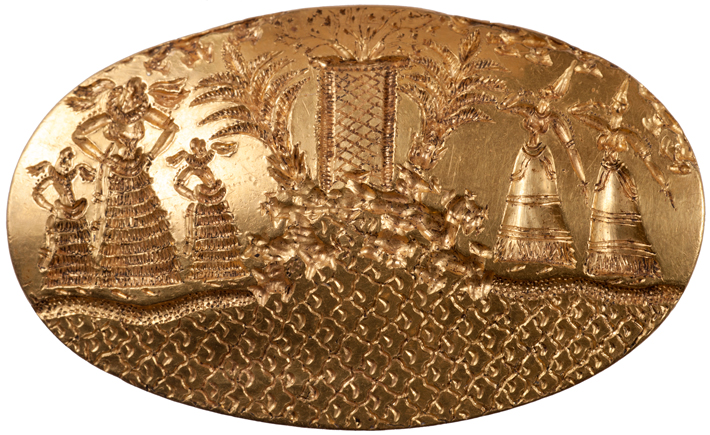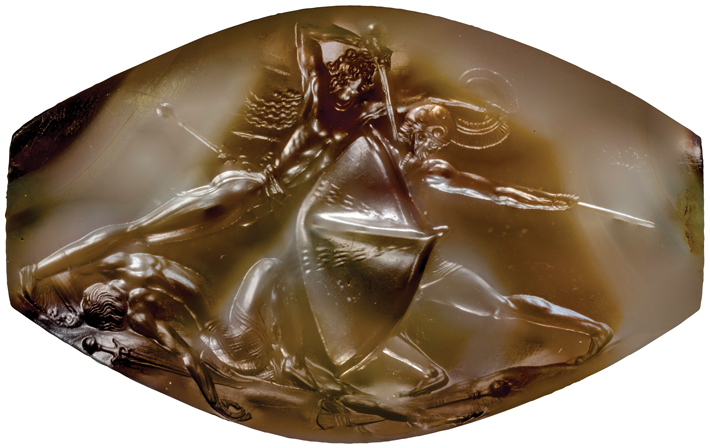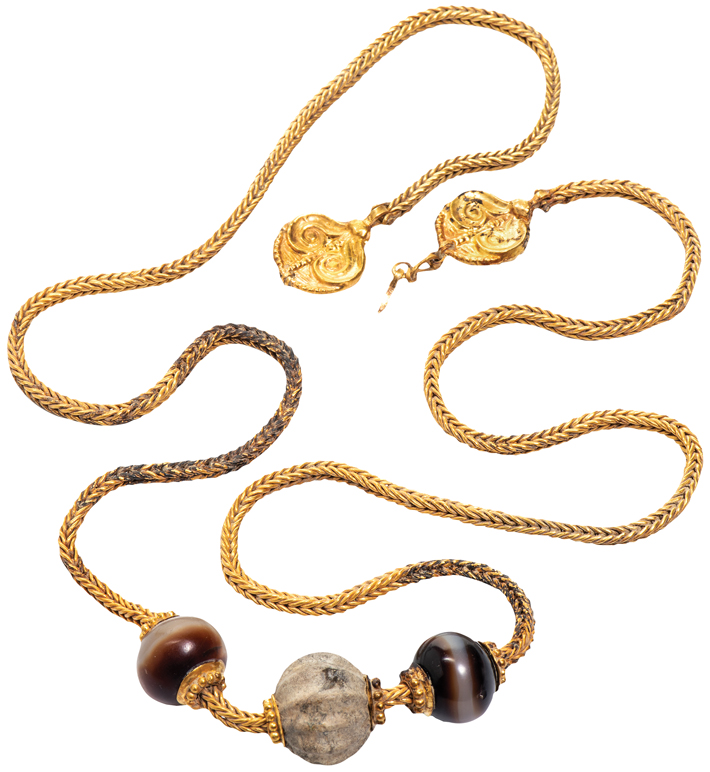In the annals of ancient Greek history, the tales of heroic deeds and legendary figures have captivated the imaginations of scholars and the public alike. From the mighty Agamemnon to the cunning Odysseus, these larger-than-life characters have become the stuff of legend, immortalized in the epic poems of Homer. Yet, as archaeologists delve deeper into the past, they uncover evidence that suggests these legendary narratives may have been rooted in real historical events and cultures.
One such remarkable discovery that has shed new light on the interconnected world of the Mycenaeans and Minoans is the grave of the Griffin Warrior, unearthed near the palace of Nestor in Pylos. This extraordinary find, adorned with over 2,000 artifacts, has challenged long-held perceptions and revealed the intricate tapestry of cultural exchange that characterized the ancient Mediterranean world.
The Mycenaean Civilization: A Backdrop for Legendary Tales

The Mycenaean civilization, which thrived from around 1600 to 1200 B.C., provided the backdrop for the legendary tales immortalized in the Iliad and the Odyssey. These epic poems, crafted some 500 years after the events they depicted, have long been the subject of scholarly debate, with many archaeologists believing that there is a “kernel of truth” to the stories passed down through generations.
The Mycenaeans were a powerful and influential culture, with extensive connections throughout the eastern Mediterranean, including Egypt, the Near East, and various Mediterranean islands. Their influence was evident in the archaeological record, which revealed a sophisticated society with a complex system of governance, trade, and cultural exchange.
The Minoan Connection: Uncovering the Intertwined Cultures
As archaeologists delved deeper into the past, they began to uncover evidence of a profound connection between the Mycenaeans and the Minoans, a civilization that flourished on the island of Crete. The discovery of the Griffin Warrior’s grave, with its stunning array of artifacts, including a gold ring depicting a Minoan goddess and a Minoan gold necklace, suggested that the relationship between these two cultures was far more complex than previously thought.
Archaeologist Dimitri Nakassis from the University of Colorado Boulder reflected on this discovery, noting that “Archaeologists have a way of cutting the world up into well-bounded cultural entities, but it seems that in the Late Bronze Age new identities were being formed.” The lines that once clearly separated the Minoans and the Mycenaeans began to blur, revealing that these distinctions were more a product of modern classification than ancient reality.

The Griffin Warrior’s Grave: A Symbol of Interconnectedness
The Griffin Warrior’s grave became a symbol of this interconnectedness, challenging long-held perceptions and illustrating the complex tapestry of cultural exchange in the ancient world. The wealth of artifacts found in the grave, including items of immense cultural and historical significance, suggested that the Mycenaeans and Minoans were not isolated civilizations, but rather part of a broader, interconnected world.
This revelation has enriched our understanding of the past, reminding us that history is often a mosaic of shared experiences and influences, woven together to create the rich fabric of human civilization. The Griffin Warrior’s legacy continues to inspire and inform, shedding light on the true nature of the ancient world and the heroes who once walked its lands.
Exploring the Interconnected World of the Mycenaeans and Minoans

The discovery of the Griffin Warrior’s grave has opened up new avenues of research and exploration, as scholars delve deeper into the complex relationship between the Mycenaeans and Minoans. By examining the artifacts found in the grave, as well as the broader archaeological evidence, researchers are gaining a better understanding of the cultural exchange, trade, and sociopolitical dynamics that characterized this pivotal period in ancient history.
One of the key questions that continues to be explored is the extent to which the Mycenaean culture was influenced by the Minoans. While it is clear that the two civilizations were closely intertwined, the debate continues as to whether Mycenaean culture was an import from Crete or a native development. The Griffin Warrior’s grave, with its Minoan-style artifacts, suggests that the relationship was far more complex than a simple one-way exchange.
The Legacy of the Griffin Warrior

The Griffin Warrior’s grave has not only challenged our understanding of the Mycenaean and Minoan cultures but has also inspired a renewed interest in the ancient world. By shedding light on the interconnectedness of these civilizations, the discovery has encouraged scholars to rethink their approach to studying the past, moving away from the rigid boundaries of traditional cultural classifications.
The legacy of the Griffin Warrior continues to inspire and inform, as researchers and the public alike explore the rich tapestry of ancient Greek history. Through the lens of this remarkable discovery, we gain a deeper appreciation for the complexities of the past and the shared experiences that have shaped the course of human civilization.
Conclusion
The tale of the Griffin Warrior’s grave is a testament to the enduring power of archaeology to challenge our understanding of the past and reveal the true nature of ancient cultures. By uncovering the deep connections between the Mycenaeans and Minoans, this discovery has enriched our knowledge of the ancient world and inspired a new generation of scholars and enthusiasts to delve deeper into the mysteries of the past.
As we continue to unravel the secrets of the Griffin Warrior’s grave and the civilizations it represents, we are reminded that history is not a simple narrative of isolated cultures, but rather a complex tapestry of shared experiences, influences, and interconnections. The legacy of the Griffin Warrior will undoubtedly continue to shape our understanding of the ancient world for generations to come.